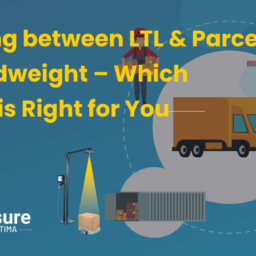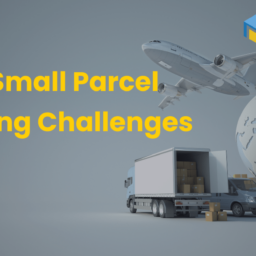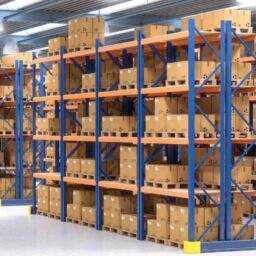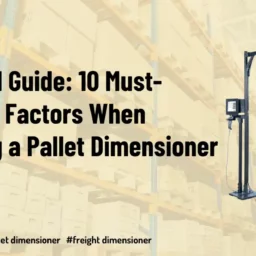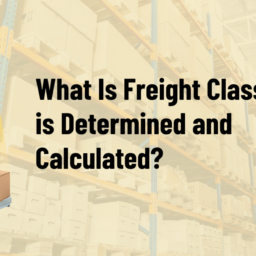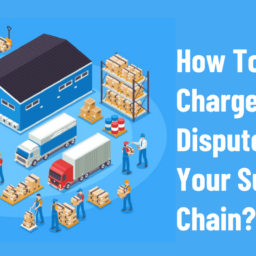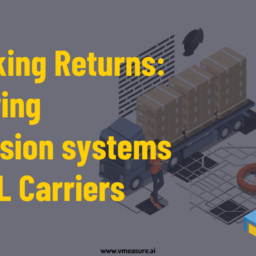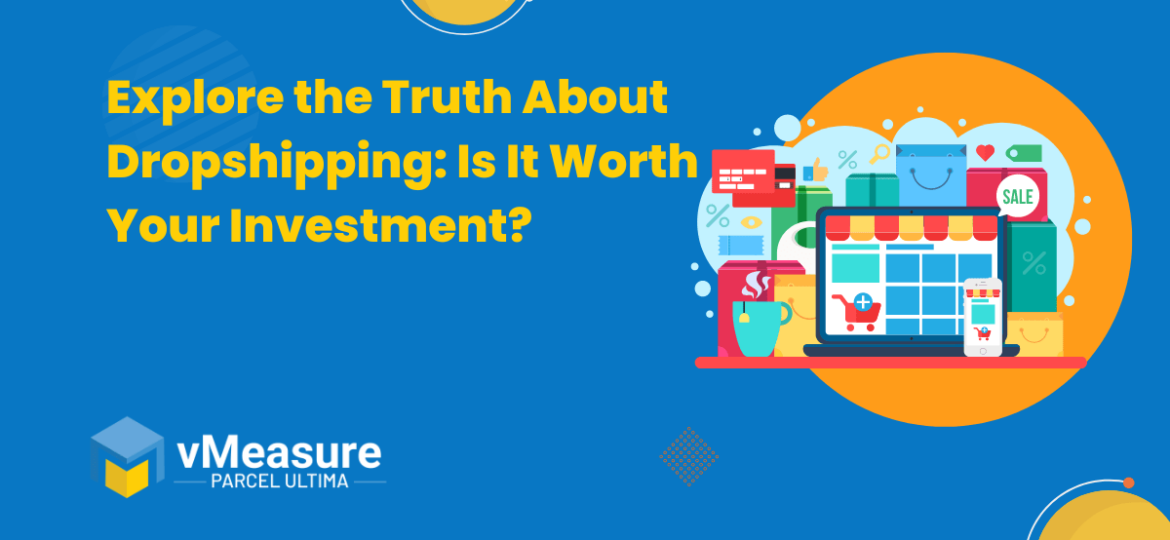
Introduction
The dropshipping business model has become popular in the past few years in the ecommerce world, especially for small businesses. This method is used mostly by many ecommerce companies like Amazon, eBay, AliExpress, etc.
If you are one among the 33% who prefer dropshipping or want to learn how it will suit your business, then you have landed on the right page.
The market size of dropshipping is $234.42 billion in 2023 and is expected to rise up to $476.1 billion by 2026. But what exactly is dropshipping, and is it right for your small ecommerce business?
Let’s take a closer look at dropshipping, exploring its benefits and drawbacks.
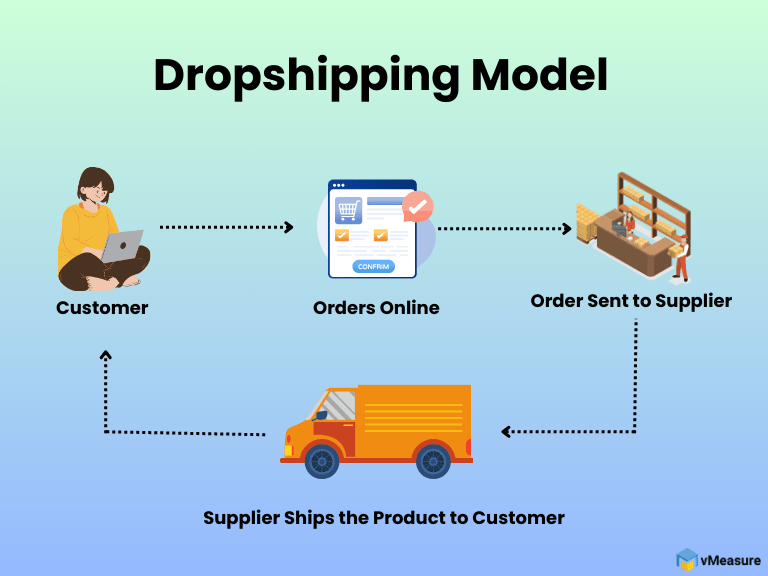
What is Dropshipping?
Dropshipping is a retail fulfillment method where the seller doesn’t stock the products they sell. Instead, when a customer places an order, the seller purchases the item from a third-party supplier and has it shipped directly to the customer.
Imagine selling things online without having to keep them in stock. That’s dropshipping! When someone buys from your online store, you simply purchase the item from another supplier, and they send it directly to the buyer. It’s like a hands-free way of running a store. This eliminates the need for the seller to handle inventory, warehousing, and shipping, significantly reducing overhead costs. In this the seller acts as a middleman, connecting buyers with suppliers without physically handling the products.
So, the fundamental differences that set dropshipping apart from traditional ecommerce are the approach to inventory and the subsequent impact on financial considerations and operational dynamics.
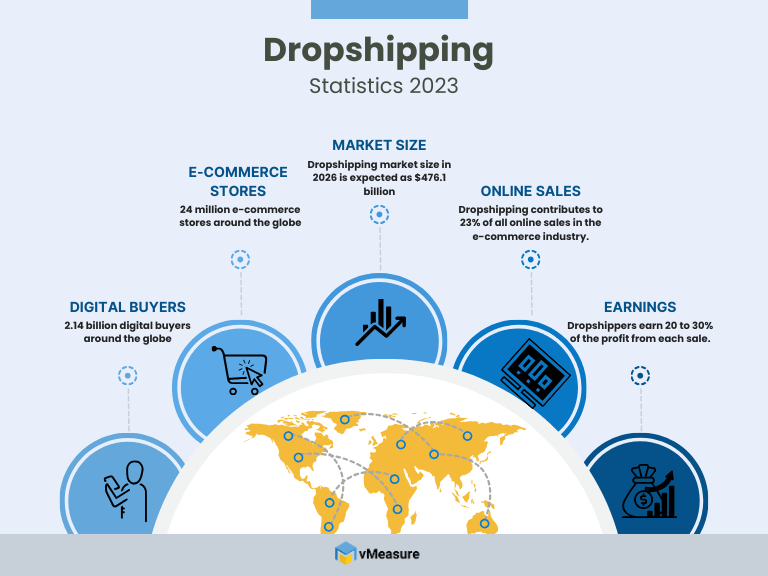
Is Dropshipping Good or Bad?
Now, let’s dissect the advantages and disadvantages of dropshipping. Knowing the benefits and pitfalls will assist you in figuring out if this business model is the right fit for your small ecommerce business.
Benefits of Dropshipping
#1 Low Initial Investment
- To start a small ecommerce business, dropshipping is an ideal choice as it eliminates significant upfront investments in inventory, warehousing, or shipping. You have the flexibility to redirect the capital towards marketing and customer acquisition.
#2 Flexible and Scalable
- Because you don’t have to deal with storing products or managing warehouses, dropshipping gives you great flexibility in product offerings. You can easily scale your business by adding or removing products without worrying about warehouse space. This agility allows for quick adaptation to market trends and customer preferences.
#3 Wide Product Range
- Dropshipping opens the door to add a vast range of products as it does not require managing inventory. This attracts a broader audience and caters to different customer preferences. By offering a broader range of products, your online store becomes a one-stop shop for customers with varied preferences.
#4 Reduced Overhead
- Traditional ecommerce businesses face high overhead costs associated with managing inventory, packing, and handling logistics. However, dropshipping notably eliminates this cost allowing you to focus on marketing, customer service, and business growth.
Disadvantage of Dropshipping
#1 Thin Profit Margin and High Competition
- When you begin a dropshipping business, you don’t have to spend a lot of money upfront, which is great. But here’s the catch; the profit you make from each sale is not high. This is because dropshipping has become popular, and many people are selling similar products. Because of this, everyone is trying to sell things at the lowest prices to attract customers.
- Now, when everyone is competing to offer the lowest prices, it makes it challenging for your business to add a good amount of extra money on top of what you originally paid for the product. In other words, your profit margin, or the extra money you make, is quite thin. This doesn’t mean you can’t make money with dropshipping, but you need to be aware that the competition might make it harder to earn a lot of extra cash from each sale.
#2 Less Control Over Quality and Shipping
- When you do dropshipping, you don’t get to control how products are stored or shipped. This means you rely on a supplier, to take care of these things. Now, if the supplier doesn’t maintain the quality of the products or makes errors in shipping, such as sending the wrong item or taking too long to dispatch orders, it can lead to unhappy customers. And when customers are not happy, it can hurt your business’ reputation. If there are problems with the way products are managed or shipped, it can create a negative impression.
#3 Dependent on Suppliers
- Since you’re not the one holding the products, you must rely on the supplier to take back items or give refunds. But the challenge is, not all suppliers are quick or easy to work with when it comes to returns or refunds. Some might have their own rules, and if they’re slow to respond or strict about returns, it can make things difficult for your customers.
#4 Brand Building Challenges
- Building a brand is like creating a unique identity for your business. Since you’re selling products from multiple suppliers, those products might be sold by many other businesses, too. This means it’s not easy to make your brand stand out or be remembered because the same products are available elsewhere.
- Imagine you sell a trendy mobile case, and a customer buys it from your online store. Later, they see the same mobile case somewhere else. They might not remember your brand; instead, they’ll just remember the product. This makes it tough to create a strong and unique image for your business.
Conclusion – Is It a Right Fit?
Now that you have learned about dropshipping, you can start thinking about whether it’s a good fit for your business. The truth about dropshipping is, that it is not a one-size-fits-all solution for every ecommerce business. It might be beneficial for some, but not for everyone. Take your time to consider if it matches your business needs and goals. Think about the products you want to sell, how you want to manage them, and the goals you have for your business. This thoughtful consideration will help you decide whether dropshipping aligns with what you want to achieve.
FAQ on dropshipping
Is dropshipping legal?
Yes, dropshipping is legal. However, like any business, it’s crucial to comply with local laws, tax regulations, and business licensing requirements. Consult with legal professionals to ensure your business adheres to regulations.
How profitable is dropshipping?
Dropshippers can make 20% to 30% profit in each sale. However, only 10% to 20% of them are profitable in the first year. Success depends on factors like product selection, marketing strategies, and efficient operations.
How can I choose reliable suppliers?
Research is key. Look for suppliers with a proven track record, positive reviews, and clear communication channels. Consider ordering sample products to assess quality.
Who provides customer service in dropshipping?
Customer service is typically handled by the dropshipper. Though the supplier handles product-related issues like defects or damages, the dropshipper manages inquiries, order tracking, and general customer support. Building strong communication with suppliers is essential for a smooth customer experience.
How much do I need to invest to start dropshipping?
The exact amount of investment varies. However, starting a dropshipping business doesn’t cost as much as opening a brick-and-mortar store. You just require finance to set up an online store, spend on marketing, and pay the subscription fees for dropshipping platform. But keep in mind that success often correlates with strategic investments in marketing and customer acquisition.
For more content like this join our newsletter!




